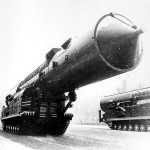 By Peter Galuszka
By Peter Galuszka
Highly controversial plans to mine and mill a rich tract of uranium in Pittsylvania County are before the General Assembly. Plenty of studies, lobbyists and scads of money are being thrown about on both sides of the argument.
Yet a brief story on page B7 in today’s Wall Street Journal deals with a topic that may be the truly decisive factor in the project.
While bullish on the long-term prospects for global uranium prices, the piece notes that spot prices for uranium have slid from about $130 a pound around 2007 when the Virginia Uranium plan was announced to about $42.25 a pound today. It had been about $70 a pound when Japan’s Fukushima reactor disaster caused it to tank in 2011.
The pieces states: “The industry needs prices at $75 or $80 a pound for future mine production to be profitable.” Thus, the uranium market has a long way to go before the 119 million pound tract around Coles Hill Farm east of Chatham, said to be the largest in the U.S., can actually be profitable to mine.
This is a fact that Virginia Uranium hasn’t really advertised. The company Web site has the standard boosterish fare about the need for uranium, how clean a fuel it is and what a boon mining and milling would be to Southside. The Website has factually inaccurate material, such as claiming that uranium has been mined successfully in Florida when what happened was that phosphate miners managed to get some uranium from their byproducts but shut down when uranium prices got too low.
That said, it could be that Virginia Uranium, made up of some local investors, the Coles family and a number of Canadians, are pressing ahead waiting for brighter days. The Journal advises that investors might be smart to make a uranium play.
Among the reasons are that China, Russia, India and South Korea are bringing online some 62 new reactors in coming years. The International Atomic Energy Agency says that nuclear power production will rise from between 35 percent and 100 percent over the next 20 years.
Another factor is that a 20-year-old agreement between Russia and the U.S. that convert material from old Soviet nuclear warheads into uranium useable in civilian reactors is due to expire this year. According to the World Nuclear Association, this program has supplied about 13 percent of world reactor requirements up to this year. The Journal predicts the pact won’t be renewed.
If the result is a tightening of uranium supply, then prices would rise. The major beneficiaries will be Kazakhstan and Canada, the first and second largest producers in the world. American production represents only 4 percent of the market.
The Journal also notes that “uranium prices could take a long time to recover.” The big boost in power production around the world (new reactors in the U.S. are progressing at a snail’s pace if at all) won’t come until 2020.
That might be about the time the Coles Hill operation is in operation if the 30-year-old ban on uranium mining is lifted by this year’s General Assembly. In the meantime, it’s a roll of the dice as far as making realistic estimates on global uranium prices.
One other point stands out. If Virginia proceeds with uranium mining, the fuel likely won’t be used by Virginia reactors or even American ones. It will be shipped overseas to fast-growing Asian countries, most likely. If there are major negative impacts from mining, people in Virginia and to some extent North Carolina, would bear the burden.
This makes running the American flag with the quote “Fuel for America” on Virginia Uranium’s corporate Website a little cheesy.


